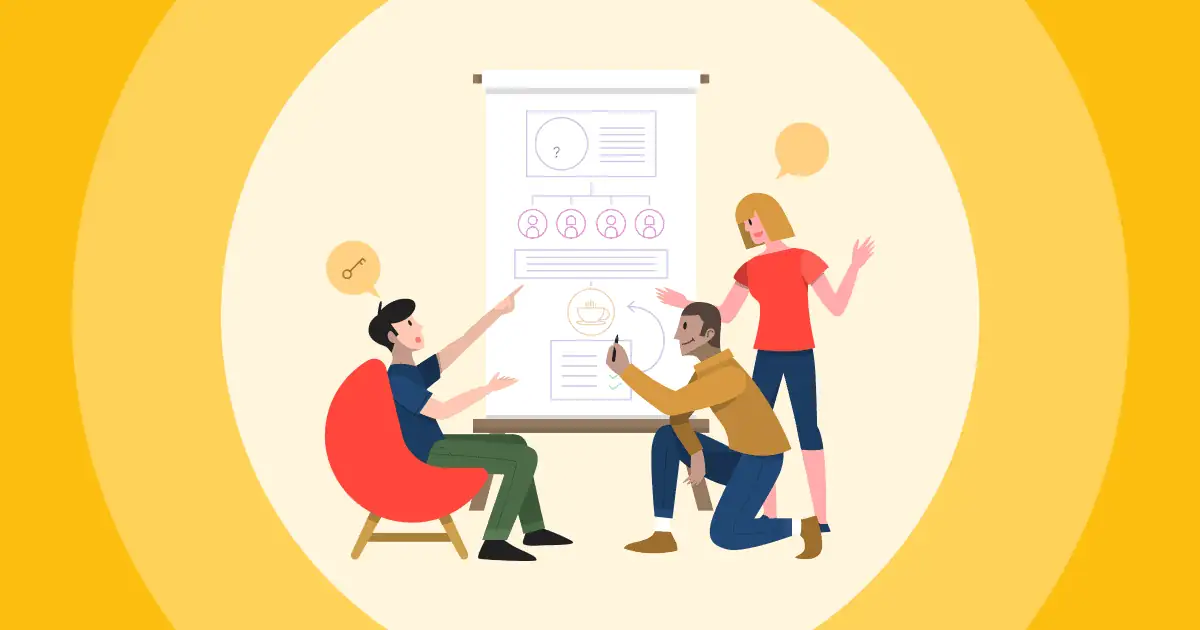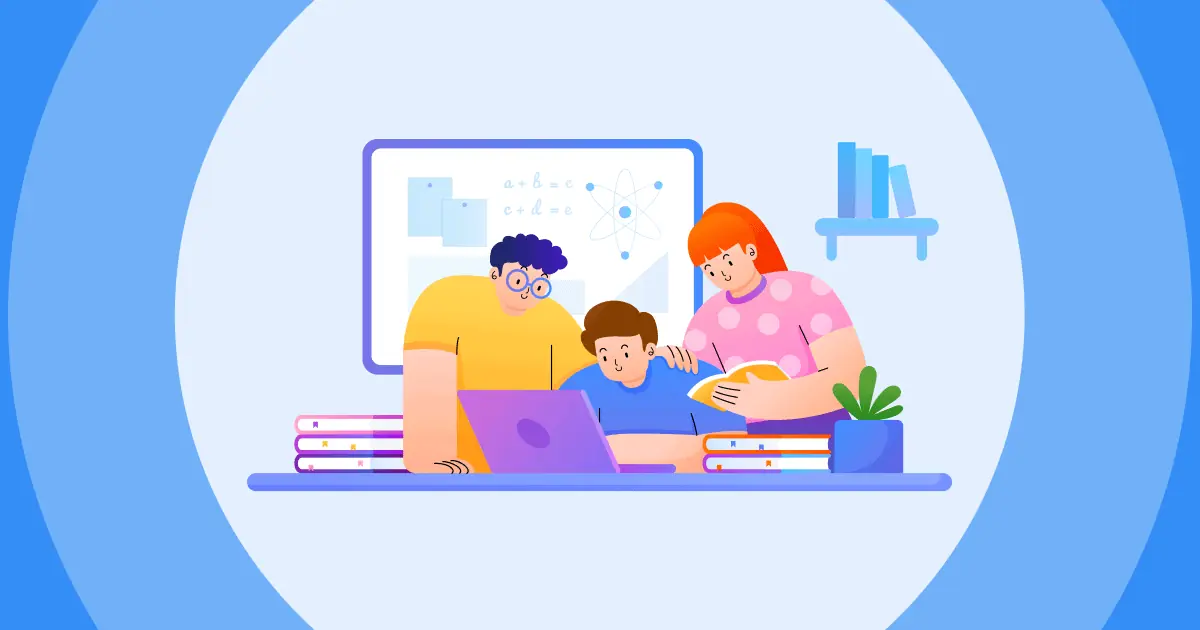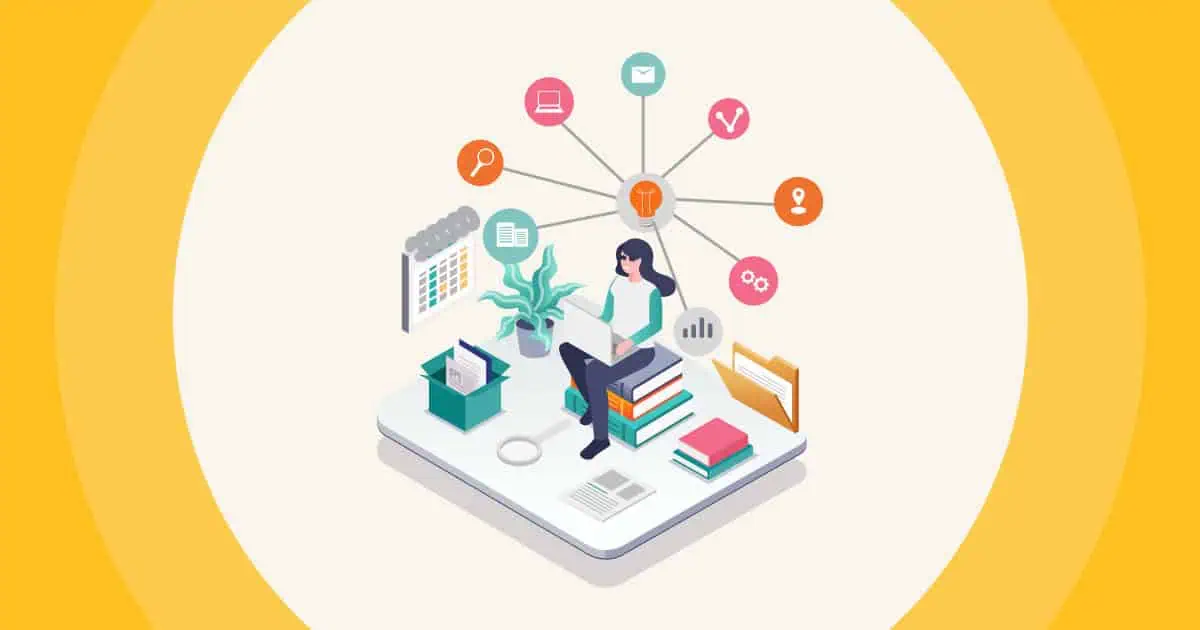Innovative teaching methods aren't just fancy buzzwords—they're essential tools for creating classrooms where students actually want to learn. Whether you're teaching in a traditional classroom, online, or in a hybrid environment, these approaches can revolutionise how your students engage with content and develop crucial skills for their future. Let's explore these techniques plus tips to facilitate them with your students below.
Table of Contents
- 15 Innovative Teaching Methods
- 1. Interactive lessons
- 2. Using virtual reality technology
- 3. Using AI in education
- 4. Blended learning
- 5. 3D Printing
- 6. Use the design-thinking process
- 7. Project-based learning
- 8. Inquiry-based learning
- 9. Jigsaw
- 10. Inquiry-led learning
- 11. Flipped classroom
- 12. Peer Teaching
- 13. Adaptive teaching with learning analytics
- 14. Crossover teaching
- 15. Personalised learning
- Frequently Asked Questions
What are Innovative Teaching Methods?
Innovative teaching methods aren't just about using the most cutting-edge technology in class or constantly catching up with the latest education trends.
They're all about using new teaching strategies that focus more on students. These innovative ones encourage students to join proactively and interact with their classmates and you - the teacher - during lessons. Students will have to work more, but in a way that meets their needs better and can help them grow faster.
Unlike traditional teaching, which mainly focuses on how much knowledge you can pass on to your students, innovative ways of teaching dig deep into what students truly take away from what you're teaching during lectures.
Why Teachers Need to be Innovative
The shift to online and hybrid learning has exposed a harsh truth: it's remarkably easy for students to zone out behind their screens. Many have perfected the art of looking engaged whilst their minds wander elsewhere (or worse, whilst they're actually in bed!).
But here's the thing—we can't place all the blame on students. As educators, we have a responsibility to create lessons that capture attention and maintain engagement. Dry, monotonous teaching simply doesn't cut it anymore, regardless of the delivery method.
The numbers tell a compelling story. Recent data from educational technology adoption shows:
- 57% of all US students now have their own digital learning devices
- 75% of US schools implemented or planned full virtual capabilities
- Educational platforms account for 40% of student device usage
- Remote learning management apps saw an 87% increase in adoption
- Collaboration app usage jumped by 141%
- 80% of educational institutions invested in new technology tools
- 98% of universities delivered online instruction
These statistics reveal a fundamental shift in how we teach and learn. Don't get left behind with outdated methods—it's time to reimagine your approach to education.
15 Innovative Teaching Methods
1. Interactive lessons
Students are your innovative learners! One-way lessons are very traditional and sometimes exhausting for you and your students, so create an environment where students feel encouraged to speak up and express their ideas.
Students can join in-class activities in many ways, not just by raising their hands or being called out to answer. These days, you can find online platforms that help you make interactive classroom activities to save heaps of time and get all students to join instead of just two or three.
🌟 Interactive lesson examples
Modern interactive platforms have revolutionised classroom participation. Instead of relying on the same three students who always raise their hands, you can engage your entire class through live quizzes, polls, word clouds, Q&A sessions, and collaborative brainstorming activities.
Not only that, but students can type or choose answers anonymously instead of raising their hands. This makes them more confident to get involved, express their opinions and no longer worry about being 'wrong' or judged.
Practical tip: Start your next lesson with an anonymous poll asking students what they already know about the topic. Use the results to adjust your teaching on the fly, addressing misconceptions and building on existing knowledge.
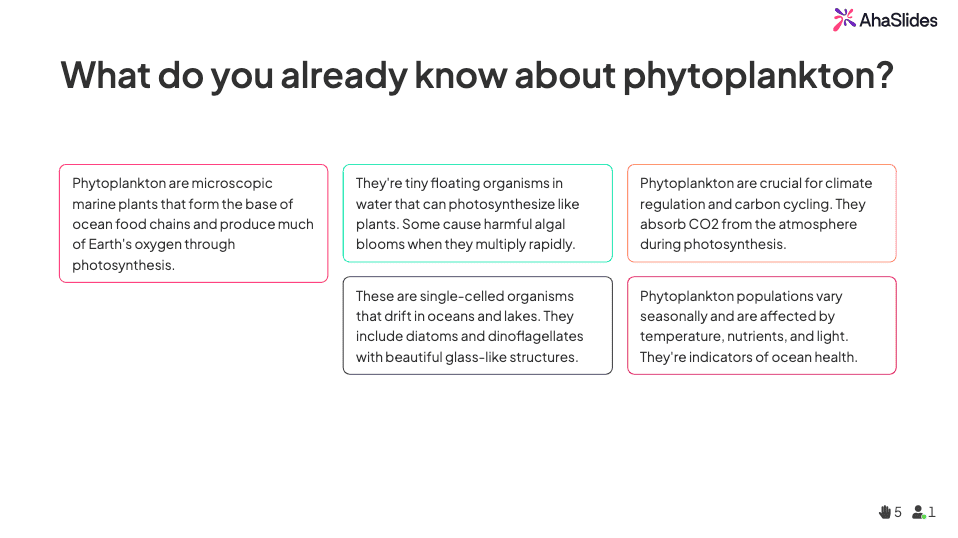
2. Using virtual reality technology
Imagine your students exploring the surface of Mars, walking through ancient Rome, or shrinking down to observe cells from the inside. That's the power of VR in education—it transforms abstract concepts into tangible, memorable experiences.
VR technology creates immersive learning environments where students interact with three-dimensional representations rather than static images in textbooks. They can manipulate objects, explore spaces, and experience scenarios that would be impossible or impractical in real life.
Yes, VR equipment represents a significant investment. But the impact on student engagement and retention often justifies the cost. Students remember experiences far better than lectures, and VR creates unforgettable learning moments.
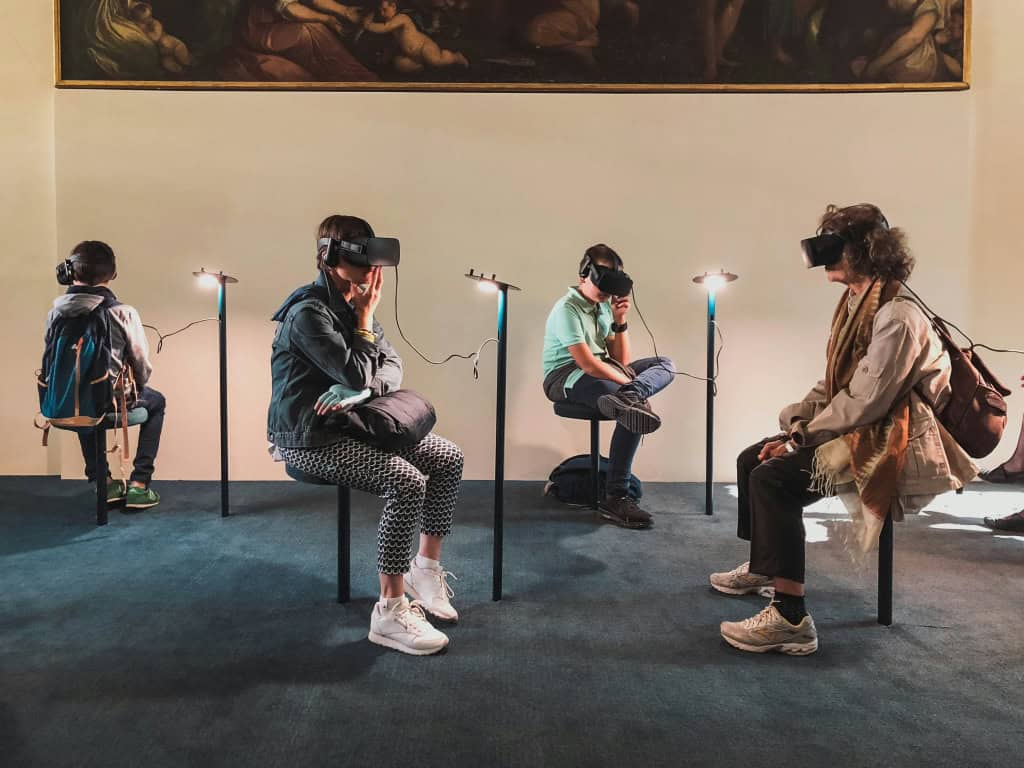
🌟 Teaching with Virtual Reality Technology
It looks fun, but how do teachers teach with VR technology for real? Watch this video of a VR session by Tablet Academy.
3. Using AI in education
Let's address the elephant in the room: AI isn't here to replace teachers. Rather, it's a powerful tool to reduce your workload and personalise instruction in ways that simply weren't possible before.
You're likely already using AI-powered tools without realising it—learning management systems, plagiarism checkers, automated grading, and adaptive learning platforms all leverage artificial intelligence. These tools handle time-consuming administrative tasks, freeing you to focus on what really matters: connecting with students and facilitating deep learning.
AI excels at several educational applications:
- Course management – Organising materials, tracking progress, and managing assignments
- Adaptive learning – Adjusting difficulty and content based on individual student performance
- Communication – Facilitating parent-teacher connections and student support
- Content creation – Generating customised learning materials and assessments
Word of caution: Use AI as a teaching assistant, not a replacement for human judgement. Always review AI-generated content and maintain your personal connection with students, that's something no algorithm can replicate.
4. Blended learning
Blended learning combines the best of both worlds: face-to-face instruction and digital learning experiences. This approach offers flexibility for both teachers and students whilst maintaining the personal connection that makes education meaningful.
In our technology-saturated world, ignoring powerful digital tools would be foolish. Video conferencing, learning management systems, interactive platforms, and countless educational apps have proven their worth. But so has in-person instruction, with its spontaneous discussions, immediate feedback, and human connection.
Blended learning lets you leverage technology to enhance—not replace—traditional teaching. Students might watch instructional videos at home, then use class time for hands-on activities, discussions, and collaborative projects. Or you might use digital tools during in-person lessons to increase engagement and gather real-time feedback.
Implementation idea: Create a "flipped" unit where students watch short video lessons at home (or during independent work time), then use class sessions for application activities, problem-solving, and peer collaboration. This maximises valuable face-to-face time.
5. 3D Printing
3D printing brings abstract concepts into students' hands—literally. There's something powerful about physically holding and examining a model that flat images and diagrams simply can't match.
Students can manipulate anatomical models to understand body systems, examine architectural structures from all angles, create historical artefacts, design engineering prototypes, or visualise mathematical concepts. The possibilities span every subject area.
Beyond just observing 3D-printed objects, the design process itself teaches valuable skills. When students create their own models, they develop spatial reasoning, problem-solving abilities, and iterative design thinking.
Budget-friendly approach: If your school doesn't have a 3D printer, many local libraries, makerspaces, and university facilities offer public access. Online services can also print and ship designs affordably. Start with downloading free educational models before investing in your own equipment.
6. Use the design-thinking process
This one is a solution-based strategy to solve problems, collaborate and spark students' creativity. There are five stages, but it's different from other methods because you don't have to follow a step-by-step guide or any order. It's a non-linear process, so you can customise it based on your lectures and activities.
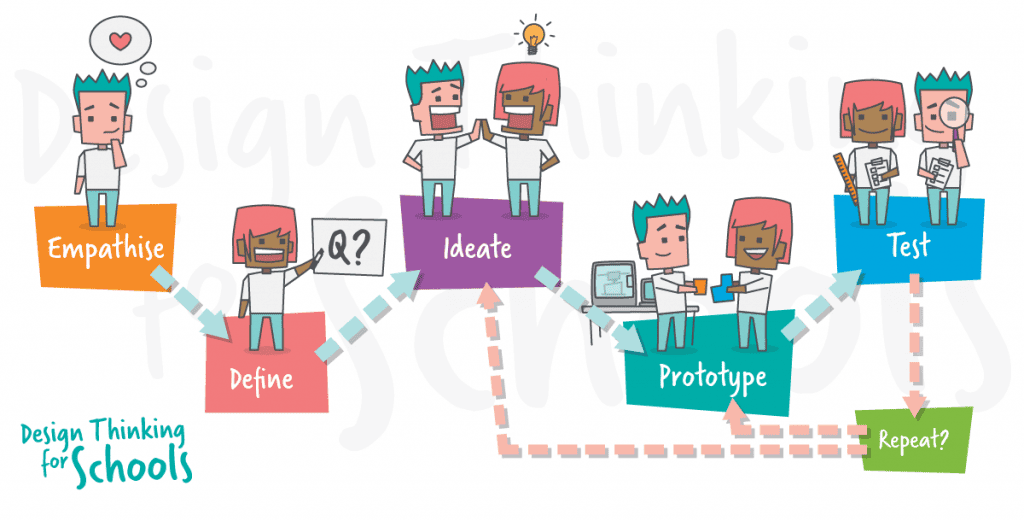
The five stages are:
- Empathise - Develop empathy, and find out the needs for the solutions.
- Define - Define issues and the potential of addressing them.
- Ideate - Think and generate new, creative ideas.
- Prototype - Make a draft or sample of the solutions to explore the ideas further.
- Test - Test the solutions, evaluate and gather feedback.
🌟 Design-thinking process example
Want to see how it goes in a real class? Here's how K-8 students at Design 39 Campus work with this framework.
7. Project-based learning
Project-based learning (PBL) flips traditional education on its head. Instead of learning content first and applying it later, students tackle real-world problems that require them to learn new content and skills along the way.
The key difference from standard end-of-unit projects: PBL projects are the learning experience, not just an assessment tacked on at the end. Students work over extended periods, developing research skills, critical thinking, collaboration abilities, and subject matter expertise simultaneously.
Your role shifts from information-deliverer to facilitator and guide. Students take ownership of their learning journey, which dramatically increases engagement and retention. They're not just memorising facts—they're applying knowledge to create something meaningful.
Compelling project ideas include:
- Filming a documentary about a local social issue
- Planning and executing a school event or fundraiser
- Managing a social media campaign for a community organisation
- Creating visual analyses of social problems with proposed solutions
- Developing sustainability plans for local businesses
Success tip: Ensure projects have authentic audiences beyond just you. When students present to community members, local professionals, or younger students, the stakes feel real and motivation skyrockets.
8. Inquiry-based learning
Inquiry-based learning begins with questions, not answers. Rather than delivering a lecture and then assessing understanding, you pose problems or scenarios that students must investigate independently or collaboratively.
This method positions you as a facilitator rather than a lecturer. Students develop research skills, critical thinking, and self-directed learning abilities as they seek answers to compelling questions.
The process typically involves students:
- Encountering a problem or question
- Formulating hypotheses or predictions
- Designing investigations or research approaches
- Gathering and analysing information
- Drawing conclusions and reflecting on findings
- Communicating results to others
Inquiry-based scenarios might include:
- Investigating pollution sources in your community and proposing solutions
- Experimenting with plant growth under various conditions
- Evaluating the effectiveness of existing school policies
- Researching questions students generate themselves about topics of interest
Scaffolding tip: Start with structured inquiry where you provide the question and method, then gradually release responsibility until students generate their own questions and design investigations independently.
9. Jigsaw
Like assembling a jigsaw puzzle, this collaborative learning strategy has students piece together their collective knowledge to form a complete picture of the topic.
Here's how it works:
- Divide your class into small groups
- Assign each group a different subtopic or aspect of the main subject
- Have groups research and become "experts" on their assigned piece
- Each group presents their findings to the class
- Together, the presentations form comprehensive understanding of the entire topic
- Optionally, facilitate peer feedback sessions where groups evaluate each other's work
For more experienced classes, you can assign individual students different subtopics. They first meet with classmates studying the same subtopic (expert groups), then return to their original groups to teach what they learned.
Subject-specific examples:
- Language arts: Assign groups different literary elements (characterisation, setting, themes, symbolism) from the same novel
- History: Have groups research different aspects of a historical event (causes, key figures, major battles, consequences, legacy)
- Science: Students investigate different body systems, then teach classmates how they interconnect
Why it works: Teaching content to peers requires deeper understanding than simply studying it. Students must truly grasp their piece to explain it clearly, and they're accountable to their classmates, not just you.
10. Inquiry-led learning
Inquiry-led learning puts curiosity at the heart of education. Instead of teachers delivering all the answers, students drive their own learning by asking questions, investigating topics, and constructing knowledge through exploration and discovery.
This approach transforms students from passive receivers into active investigators. Teachers act as facilitators who guide the inquiry process rather than gatekeepers of information. Students develop critical thinking, research skills, and a deeper understanding because they're personally invested in finding answers to questions that matter to them.
The inquiry cycle typically moves through phases: students pose questions, plan investigations, gather and analyse information, draw conclusions, and reflect on what they've learned. This mirrors how real scientists, historians, and professionals work in the field.
What makes inquiry-led learning particularly powerful is that it teaches students how to learn, not just what to learn. They develop problem-solving abilities and resilience when faced with challenges, preparing them for lifelong learning.
🌟 Inquiry-led learning examples
- Science investigation: Instead of telling students how plants grow, ask "What do plants need to survive?" Let students design experiments testing different variables like light, water, and soil quality.
- Historical inquiry: Rather than lecturing about a historical event, pose a question like "Why did the Berlin Wall fall?" Students research multiple perspectives, primary sources, and historical contexts to build their understanding.
- Math exploration: Present a real-world problem: "How can we redesign our school playground to maximise play areas within budget?" Students apply mathematical concepts while investigating practical solutions.
11. Flipped classroom
The flipped classroom model inverts traditional instruction: content delivery happens at home, whilst application and practice happen in class.
Before class, students watch videos, read materials, or explore resources to gain foundational knowledge. Then, precious class time is devoted to activities traditionally considered "homework"—applying concepts, solving problems, discussing ideas, and collaborating on projects.
This approach offers several advantages. Students can pause, rewind, and rewatch instructional content as needed, learning at their own pace. Struggling students get extra time with foundational material, whilst advanced students can move quickly through basics and dive deeper into extensions.
Meanwhile, you're available during class for the moments when students actually need you most—when they're grappling with challenging applications, not passively listening to explanations.
Implementation strategy: Create short, focused video lessons (5-10 minutes maximum). Students have short attention spans with recorded content, so keep it concise and engaging. Use class time for hands-on activities, discussions, and collaborative problem-solving where your expertise adds real value.
Wanna know how a flipped classroom looks and takes place in real life? Check out this video by McGraw-Hill about their flipped class.
12. Peer Teaching
This one's similar to what we've discussed in the jigsaw technique. Students understand and master knowledge better when they can explain it clearly. When presenting, they might learn by heart beforehand and speak aloud what they remember, but to teach their peers, they must understand the problem thoroughly.
Students can take the lead in this activity by choosing their area of interest within the subject. Giving students this kind of autonomy helps them to develop a feeling of ownership of the subject and the responsibility to teach it right.
You'll also find that giving students the chance to teach their classmates boosts their confidence, encourages independent study, and improves presentation skills.
🌟 Peer Teaching Examples
Watch this video of a natural, dynamic maths lesson taught by a young student at Dulwich High School of Visual Arts and Design!
13. Adaptive teaching with learning analytics
Adaptive teaching uses data and technology to personalise instruction for each student in real-time. Learning analytics tools collect information about student performance, engagement, and learning patterns, then help teachers adjust their teaching strategies to meet individual needs.
This method goes beyond traditional one-size-fits-all instruction by recognising that every student learns differently and at their own pace. Teachers can use dashboards and reports to identify which students need extra support, which are ready for more challenging material, and what concepts the whole class struggles with.
Learning analytics platforms track everything from quiz scores and assignment completion to time spent on tasks and interaction patterns. This data gives teachers actionable insights without relying solely on gut feelings or periodic tests.
🌟 Adaptive teaching with learning analytics examples
Learning management system (LMS) data: Platforms like Google Classroom, Canvas, or Moodle track student engagement metrics—when students access materials, how long they spend reading, which resources they revisit. Teachers can reach out to students showing disengagement patterns before they fall behind.
Adaptive learning platforms: Use tools like Khan Academy or IXL that automatically adjust question difficulty based on student responses. Teachers receive detailed reports showing which concepts each student has mastered and where they're struggling.
Real-time formative assessment: During lessons, use platforms like AhaSlides or Kahoot to run quick checks for understanding. Analytics instantly show which students got questions right or wrong, allowing you to re-teach concepts on the spot or form targeted small groups.
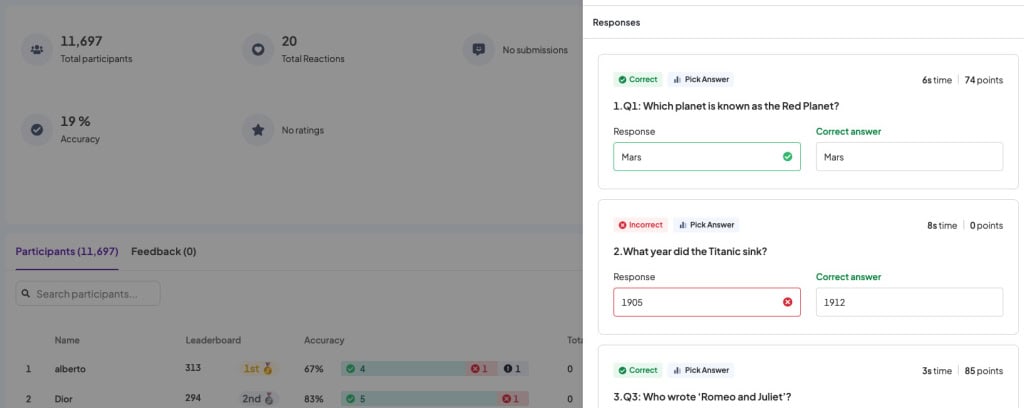
14. Crossover teaching
Do you remember how excited you were when your class went to a museum, exhibition, or field trip? It's always a blast to go outside and do something different from looking at the board in a classroom.
Crossover teaching combines the experience of learning in both the classroom and a place outside. Explore concepts in school together, then arrange a visit to a particular place where you can demonstrate how that concept works in a real setting.
It would be even more effective to further develop the lesson by hosting discussions or assigning group work in class after the trip.
🌟 Virtual crossover teaching example
Sometimes, going outside isn't always possible, but there are ways around that. Check out the virtual Museum of Modern Art tour with Mrs Gauthier from Southfield School Art.
15. Personalised learning
Here's an uncomfortable truth: what works brilliantly for some students flops completely for others. Group activities energise extroverts but overwhelm introverts. Visual learners thrive with diagrams whilst verbal learners prefer discussion. Fast-paced lessons engage some whilst leaving others behind.
Personalised learning acknowledges these differences and tailors instruction to individual students' interests, needs, strengths, and weaknesses. Yes, it requires more planning time upfront. But the payoff in student achievement and engagement is substantial.
Personalisation doesn't mean creating completely different lessons for every student. Rather, it means offering choices, flexible pacing, varied assessment methods, and differentiated support.
Digital tools make personalisation more manageable than ever. Adaptive learning platforms adjust difficulty automatically, learning management systems track individual progress, and various apps let students demonstrate understanding in multiple ways.
Start small: Begin with choice boards where students select from several options for assignments or projects. Or use formative assessment data to create flexible groupings—sometimes working with struggling students whilst others tackle extensions, other times grouping by interest rather than ability. Gradually incorporate more personalisation as you grow comfortable.
Frequently Asked Questions
How do I choose which innovative method to try first?
Start with what aligns best with your teaching style and available resources. If you're comfortable with technology, try interactive lessons or flipped classroom first. If you prefer hands-on learning, experiment with project-based learning or the jigsaw technique. Don't feel pressured to adopt everything simultaneously—even one new method can significantly impact student engagement.
What if my students resist these new methods?
Change can be uncomfortable, especially for students accustomed to passive learning. Start gradually, explain why you're trying new approaches, and be patient as students adjust. Many students initially prefer traditional methods simply because they're familiar, not because they're more effective. Once students experience success with innovative approaches, resistance typically fades.
Don't these methods take too much class time?
Initially, yes—implementing new methods requires adjustment time. But remember, teaching isn't about covering content; it's about students learning content. Innovative methods often result in deeper, more lasting understanding than traditional lectures, even if you cover less material. Quality trumps quantity. Additionally, as you and students become familiar with these approaches, they become more efficient.




